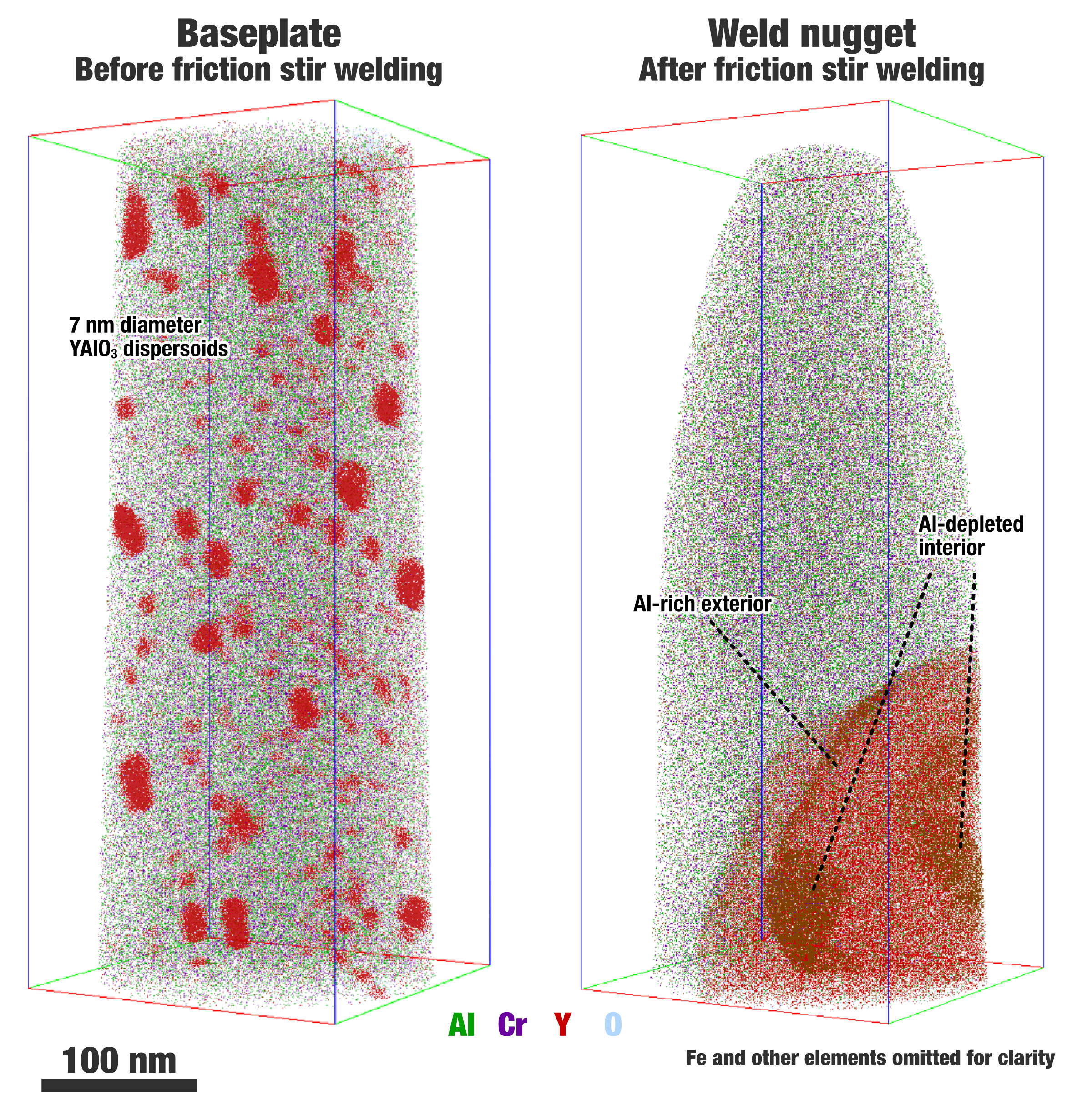Particle coarsening during FSW of ODS steels
Oxide dispersion-strengthened (ODS) steels, containing nanoscale YAl3 particles which strengthen the alloy and mitigate radiation-induced swelling, are used in a variety of nuclear and other high-temperature power applications. Traditional welding processes are unsuitable for joining these alloys because the oxide particles agglomerate during melting. Friction stir welding (FSW) is a solid-state joining process thought to prevent these deleterious effects, but atom-probe tomography has revealed significant oxide particle agglomeration, coarsening, and phase transformation when ODS steels are joined by FSW.
Related publications
- Brad W Baker, Keith E Knipling, and Luke N Brewer “Oxide Particle Growth During Friction Stir Welding of Fine Grain MA956 Oxide Dispersion-Strengthened Steel” Met. Mater. Trans. E 4 (1) pp. 1—12 (2017).
- Elizabeth Getto, Brad W Baker, B Tobie, S Briggs, K Hattar, and Keith E Knipling “Effect of Friction Stir Welding and Self-Ion Irradiation on Dispersoid Evolution in Oxide Dispersion Strengthened Steel MA956 Up to 25 dpa” J. Nucl. Mater. 515 pp. 407–419 (2019).

Related publications
- Brad W Baker, Keith E Knipling, and Luke N Brewer “Oxide Particle Growth During Friction Stir Welding of Fine Grain MA956 Oxide Dispersion-Strengthened Steel” Met. Mater. Trans. E 4 (1) pp. 1—12 (2017).
- Elizabeth Getto, Brad W Baker, B Tobie, S Briggs, K Hattar, and Keith E Knipling “Effect of Friction Stir Welding and Self-Ion Irradiation on Dispersoid Evolution in Oxide Dispersion Strengthened Steel MA956 Up to 25 dpa” J. Nucl. Mater. 515 pp. 407–419 (2019).